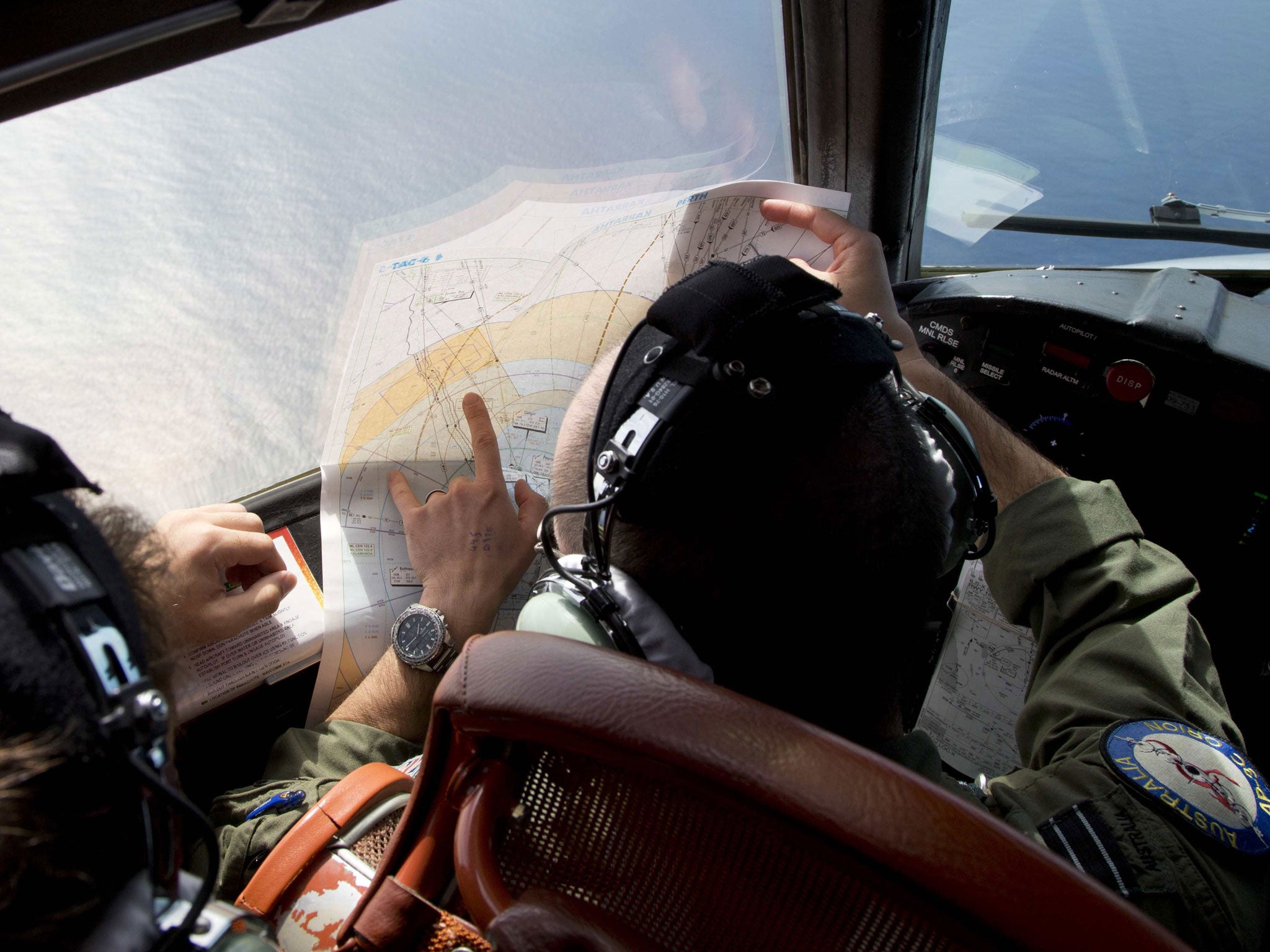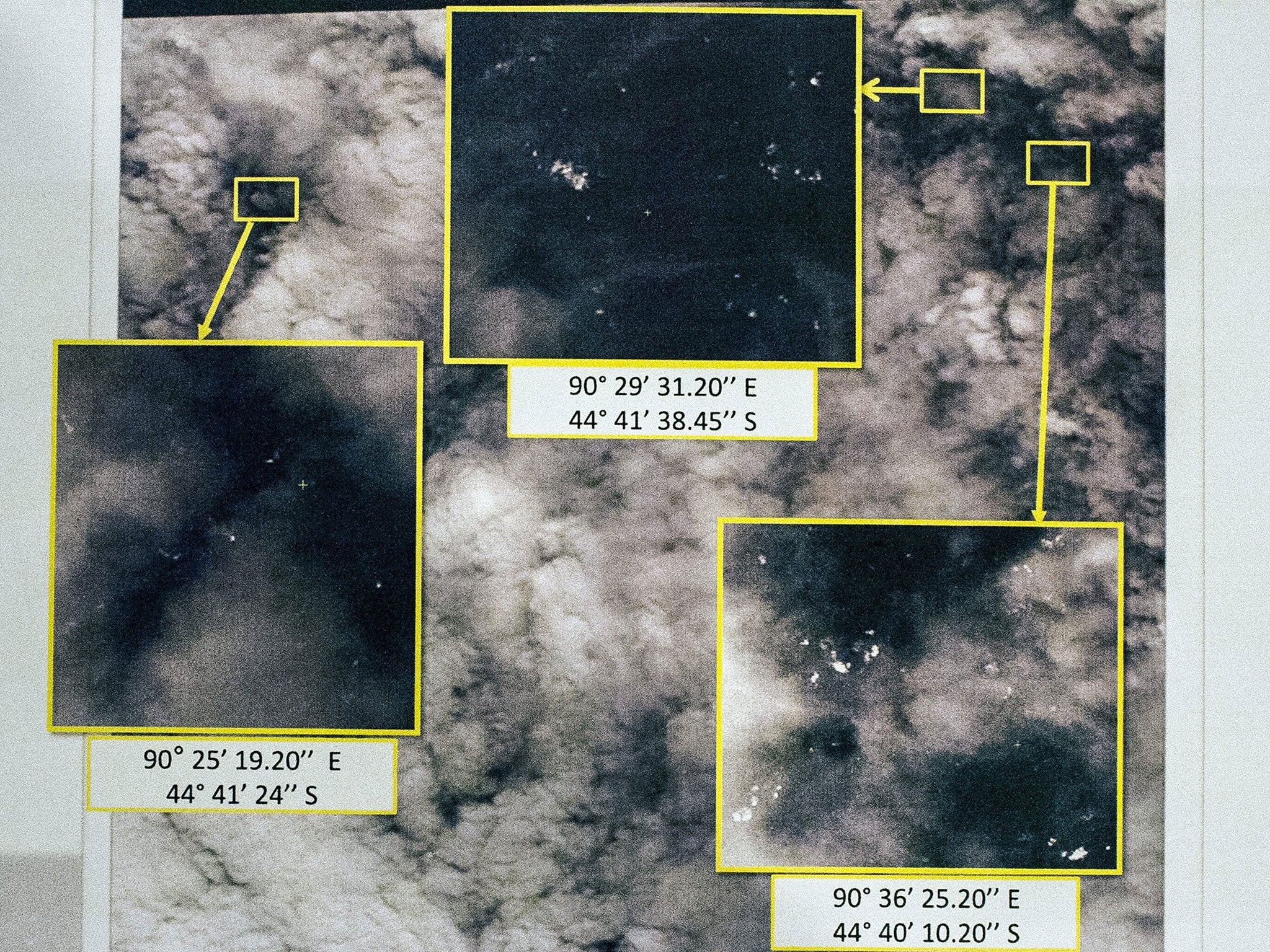Missing MH370: So many 'credible leads' – and still no sign
There have been countless sightings, satellite readings and new data since the flight vanished almost three weeks ago, yet nothing has been found and officials are no closer to working out what happened to the plane

Your support helps us to tell the story
From reproductive rights to climate change to Big Tech, The Independent is on the ground when the story is developing. Whether it's investigating the financials of Elon Musk's pro-Trump PAC or producing our latest documentary, 'The A Word', which shines a light on the American women fighting for reproductive rights, we know how important it is to parse out the facts from the messaging.
At such a critical moment in US history, we need reporters on the ground. Your donation allows us to keep sending journalists to speak to both sides of the story.
The Independent is trusted by Americans across the entire political spectrum. And unlike many other quality news outlets, we choose not to lock Americans out of our reporting and analysis with paywalls. We believe quality journalism should be available to everyone, paid for by those who can afford it.
Your support makes all the difference.It started with Vietnam. First the country's navy said it had spotted oil slicks off the Vietnamese coast a day after Flight MH370 disappeared without a trace. This was believed to be the "first sign" that the flight crashed into the sea.
The following day, the Vietnamese navy said it spotted a floating object, thought to be the door of the plane, about 50 miles southwest of Tho Chu Island.
Neither sighting proved to be from the missing Malaysia Airlines plane, which never arrived at Beijing after taking off from Kuala Lumpur on 6 March.
The current search area is thousands of miles in the opposite direction to Vietnam from Kuala Lumpur, in the middle of the vast Indian Ocean, around 1,150 miles west of Perth, Australia.
The change in direction initially came on 9 March, when the Malaysian military announced that radar indicated that the plane turned back on itself shortly before vanishing, meaning it began travelling away from Beijing before disappearing.
Five days later however, China questioned the credibility of the finding, announcing that satellites had captured images of three "large, floating, objects" described as a "suspected crash area at sea," located south of Vietnam, and on the original flight path. The report was later retracted.
Around the same time, a man from New Zealand working on an oil rig off Vietnam claimed that he was a burning object flying through the sky on the morning after the flight took off.
Still nothing was found.
By now the search was widened to cover an area from Australia to Afghanistan. It was revealed that the final message sent to air traffic controllers from the jet's cockpit - "All right, good night" - was spoken after someone on board had already disabled the plane's ACARS reporting system.
Around 14 minutes later someone also switched off the plane's transponder. New data now showed that the plane may have continued flying for up to five hours after this. There was even reports that the flight may have been deliberately flown under the radar to Taliban-controlled bases on the border of Afghanistan.
Last week, focus was placed firmly on the Indian Ocean - it appeared that the plane had indeed U-turned to fly south of Kuala Lumpur. Chinese and Australian satellites picked up images of possible debris.
On the 20 March, Australia reported spotting two objects that may have been linked to the flight. Boats were dispatched, with many thinking this was it. Nothing was found.
On Wednesday of this week a French defence firm provided new satellite images that showed 122 objects floating in the Indian Ocean. Further images were provided by Thai satellites showed 300 objects. Again, search flights and boats were sent out, but again, no objects were found.

On Friday, the search area moved 680 miles north-east of the site where images of potential debris were captured. Australian officials have cited a "new credible lead" that means the flight travelled faster after its communications were cut than previously thought, so ran out of fuel and potentially crashed into the sea quicker.
Planes scouring the new area quickly spotted objects, but still nothing is confirmed. The first ship able to determine if the objects are from the plane is not expected to arrive until Saturday.
Only then, might officials be a step closer to finding out what happened to Flight MH370 after it vanished from Malaysian air traffic control screens at 1:30am on Saturday 8 March.
Join our commenting forum
Join thought-provoking conversations, follow other Independent readers and see their replies
0Comments